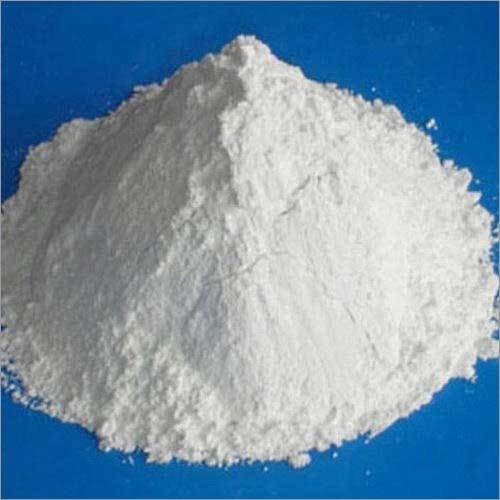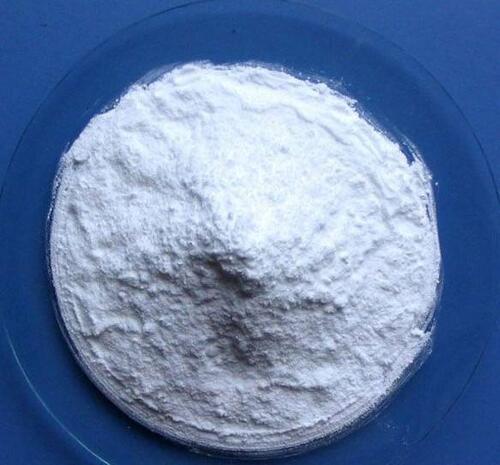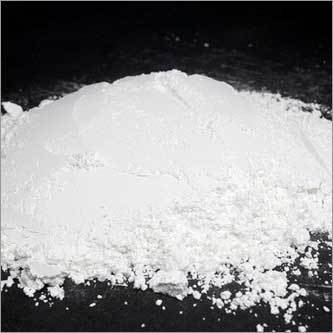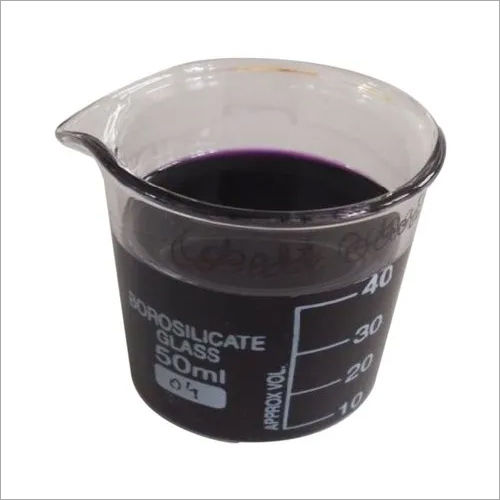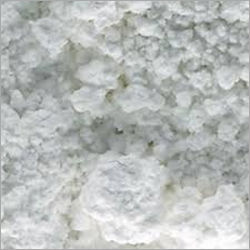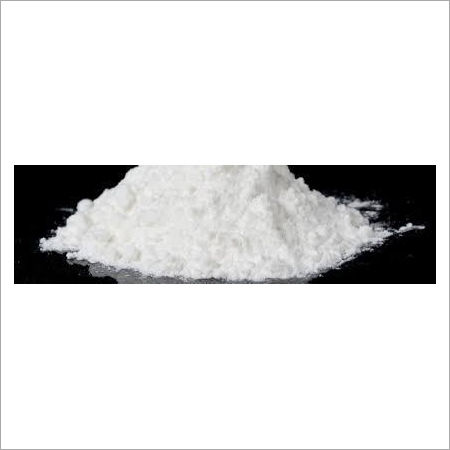Call Us : 08045816053
Aluminium Trihydrate
Product Details:
- Form Powder
- Chemical Name Aluminium Trihydrate
- CAS No 21645-51-2
- Grade Industrial Grade
- Click to View more
X
Aluminium Trihydrate Price and Quantity
- 100 Kilograms
Aluminium Trihydrate Specification
- Aluminium Trihydrate
- Industrial Grade
- Powder
- 21645-51-2
Aluminium Trihydrate Trade Information
- Cash Advance (CA)
- 1 Week
- 25 Kg
Product Description
Aluminium trihydrate, also known as aluminum trihydrate or ATH, is a white, odorless, and non-toxic compound with the chemical formula Al(OH)3. It is derived from bauxite ore, which is a common source of aluminum.
Aluminium trihydrate has several important industrial applications, including its use as a flame retardant and as a raw material in the production of aluminum chemicals. Here are some key uses and properties of aluminium trihydrate:
1. Flame retardant: Aluminium trihydrate is commonly used as a flame retardant in various materials, including plastics, rubber, textiles, and coatings. When exposed to heat or flames, aluminium trihydrate decomposes and releases water vapor, which helps to cool and dilute the flammable gases, thereby suppressing the combustion process.
2. Filler and pigment: Due to its fine particle size and white color, aluminium trihydrate is used as a filler and pigment in the production of papers, paints, plastics, and various other materials. It can improve the opacity, brightness, and whiteness of these products.
3. Antacid: Aluminium trihydrate is used as an antacid to treat conditions such as heartburn, indigestion, and stomach ulcers. It works by neutralizing excess stomach acid and providing a protective coating on the lining of the stomach.
4. Water treatment: Aluminium trihydrate is employed in water treatment processes to remove impurities and contaminants. It helps in the coagulation and flocculation of suspended particles, allowing them to settle and be removed from the water.
5. Raw material: Aluminium trihydrate is a precursor to various aluminum compounds, such as aluminum chloride, aluminum sulfate, and alumina. These compounds find applications in industries such as ceramics, glass manufacturing, paper production, and pharmaceuticals.
Aluminium Trihydrate Properties:
1. Chemical formula: The chemical formula of aluminium trihydrate is Al(OH)3. It indicates that the compound consists of one aluminium atom (Al) bonded to three hydroxide groups (OH).
2. Appearance: Aluminium trihydrate is a white, crystalline powder or granules. It typically has a fine particle size.
3. Molecular weight: The molecular weight of aluminium trihydrate is approximately 78 g/mol.
4. Solubility: Aluminium trihydrate is sparingly soluble in water. It has a solubility of about 0.6 g/100 mL at 20 degree centigrade. The solubility increases with increasing temperature.
5. Density: The density of aluminium trihydrate varies depending on factors such as particle size and degree of compaction. Typically, it has a density of around 2.42 g/cm3.
6. Melting point: Aluminium trihydrate does not have a sharp melting point. Instead, it undergoes a series of phase transitions when heated. The first phase transition occurs at around 180 degree centigrade, where it loses water molecules and transforms into a different crystalline form known as gibbsite.
7. Flame retardancy: One of the notable properties of aluminium trihydrate is its flame retardant behavior. When exposed to heat or flames, it decomposes and releases water vapor (steam) and aluminum oxide. The water vapor helps cool down the surrounding area, while the aluminum oxide forms a protective layer that inhibits the combustion process.
8. pH: Aluminium trihydrate is a weak base and has a slightly alkaline pH when dissolved in water. It contributes to the alkalinity of solutions containing the compound.
9. Stability: Aluminium trihydrate is relatively stable under normal conditions. However, it can decompose at high temperatures (above 200 degree centigrade), releasing water vapor and forming alumina (Al2O3).
10. Toxicity: Aluminium trihydrate is considered non-toxic and safe for general use. It is commonly used in various consumer products and pharmaceutical applications without significant health concerns. However, prolonged exposure to high concentrations of airborne aluminium trihydrate dust may cause respiratory irritation in some individuals.
Frequently Asked Questions:
Q: What are the main applications of aluminium trihydrate?
A: Aluminium trihydrate has several applications, including flame retardants in plastics, rubber, textiles, and coatings; fillers and pigments in papers, paints, and plastics; antacids for treating digestive issues; water treatment for coagulation and flocculation; and as a raw material for producing aluminum chemicals.
Q: Is aluminium trihydrate toxic?
A: Aluminium trihydrate is generally considered non-toxic and safe for use. It is widely used in consumer products and pharmaceuticals without significant health concerns. However, inhalation of high concentrations of airborne aluminium trihydrate dust may cause respiratory irritation in some individuals.
Q: How does aluminium trihydrate act as a flame retardant?
A: Aluminium trihydrate acts as a flame retardant by releasing water vapor when exposed to heat or flames. The water vapor helps to cool and dilute the flammable gases, suppressing the combustion process and reducing the spread of fire.
Q: Can aluminium trihydrate be dissolved in water?
A: Aluminium trihydrate is sparingly soluble in water. It has a solubility of approximately 0.6 g/100 mL at 20 degree centigrade. The solubility increases with increasing temperature.
Q: What is the density of aluminium trihydrate?
A: The density of aluminium trihydrate typically ranges around 2.42 g/cm3. However, the actual density can vary depending on factors such as particle size and compaction.
Q: Does aluminium trihydrate have any impact on pH?
A: Aluminium trihydrate is a weak base and can slightly increase the alkalinity of solutions when dissolved in water.
Q: Can aluminium trihydrate be used in water treatment?
A: Yes, aluminium trihydrate is used in water treatment processes. It helps in coagulation and flocculation, assisting in the removal of impurities and suspended particles from water.
Q: What is the melting point of aluminium trihydrate?
A: Aluminium trihydrate does not have a sharp melting point. It undergoes a series of phase transitions when heated, starting at around 180 degree centigrade, where it loses water molecules and transforms into gibbsite, a different crystalline form.
Q: Can aluminium trihydrate be used as a raw material for other compounds?
A: Yes, aluminium trihydrate is a precursor for various aluminum compounds. It can be used to produce aluminum chloride, aluminum sulfate, alumina, and other chemicals used in industries such as ceramics, glass manufacturing, paper production, and pharmaceuticals.
Q: Is aluminium trihydrate the same as pure aluminum?
A: No, aluminium trihydrate is not the same as pure aluminum metal. It is an aluminum compound derived from bauxite ore and is used for specific purposes, whereas pure aluminum refers to the metallic form of the element.
Tell us about your requirement

Price:
Quantity
Select Unit
- 50
- 100
- 200
- 250
- 500
- 1000+
Additional detail
Mobile number
Email
 English
English Spanish
Spanish French
French German
German Italian
Italian Chinese (Simplified)
Chinese (Simplified) Japanese
Japanese Korean
Korean Arabic
Arabic Portuguese
Portuguese
